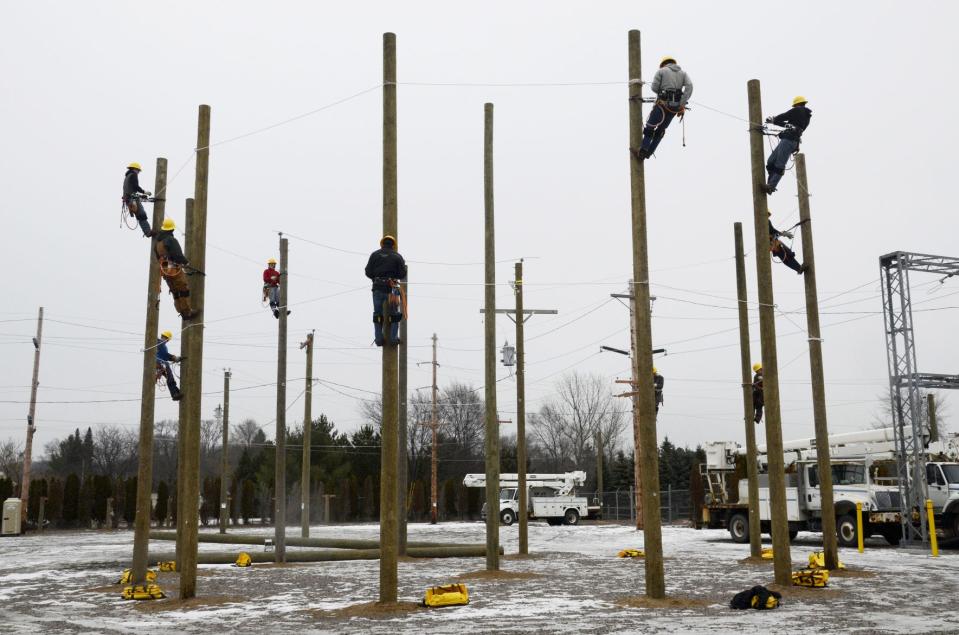Michigan has invested millions in STEM education — why is the sci-tech focus so important?
Editor's Note: The online version of this story has been updated to correct information about the electric lineworker program in Boyne City.
We've all heard it before: STEM. But what does STEM mean, and why are our children learning it?
STEM — Science, Technology, Engineering and Mathematics — is a growing field of jobs and opportunities. The Bureau of Labor Statistics projects that more than a million STEM-related jobs will be added throughout the 2020s, representing an 11 percent growth. Other industries are projected at less than eight percent.
For that reason, introducing students to STEM-heavy curriculums is more important than ever before. But it's not just about future job opportunities. It's also about problem solving.
In Michigan, the Department of Labor and Economic Opportunity has launched the MiSTEM Network, a group dedicated to prepare students for the growth in demand for innovative workers. Since launching in 2017, the group has invested $3.05 million annually in state grants to support K-12 STEM programs.
“It's so important because there are skills that our students need, whether they choose to go into a STEM field or not," said Drea Weiner, regional director of the MiSTEM Network's Northwestern Lower Michigan Region. “The process of thinking through is really an iterative process. It's got problem solving and critical thinking and questioning skills that everyone really needs.”
At Petoskey High School, chemistry teacher and robotics coach Tom Ochs has seen firsthand how students can be impacted by a STEM-focused education — but to him, it's not as easy as doing a "cookbook activity."
“STEM, to be useful, has to have some true design aspect (to) it or true application, rather than just putting something together,” he said. "It brings the math, the science, the engineering, the arts, all to a real project — it makes it tangible.”
Ochs coaches The Petoskey Paladins, the high school's robotics team. In addition to providing students with STEM opportunities, Ochs said the experience offers learning in communication, marketing and design skills, among others.
“One girl that was in the program comes to mind — when she joined as a sophomore, she didn’t have any idea how to hold a wrench, she didn’t have any idea how,” he said. “By the time she was a senior, she was one of my two mechanical lead mentors and she went on to (the University of Michigan) and did nuclear engineering.”
This season, the team has about 28 students.
Weiner said she appreciates robotics programs in schools because it creates a strong collaborative opportunity for the students on the teams.
“That's a really interesting ecosystem of kids that, as a whole, make a really good team,” she said. “Then all of that comes with critical thinking, problem solving, the teamwork skills, all of those are things that our employers want.
"(It means) they can teach them all of the mechanics of what needs to happen around the office, and all the knowledge — what they can't really teach them, and what they don't really have time for, (are) those interpersonal skills.”
Career and Technical Education Programs can also help with STEM — giving students hands-on learning opportunities for fields that desperately need more hands. Boyne City Public Schools, for example, offers an electric lineworker program with Great Lakes Energy.

Teachers in the program work at Great Lakes Energy and take students into the field for coursework.
“They actually run the kids through the entire program," Weiner said. "Kids are climbing the poles in the winter, or in the fall, or in the rain. ... When the power goes out, someone has to help fix it. So, they work with the kids as realistic as possible over what it means to deal with these high voltages and what it means to actually be putting up these electrical towers.”
STEM is gaining focus at the national level, too, with a Biden-Harris Administration program called Raise the Bar: STEM Excellence for All Students. The program is designed to make high-quality STEM education accessible for all students — regardless of background.
According to Pew Research Center, there seems to be a long path ahead to increase diversity in STEM workplaces. Women, Black and Hispanic workers are often underrepresented in STEM fields.
Subscribe:Check out our offers and read the local news that matters to you
The center reported in 2021 that, while Black workers make up 11 percent of the workforce, they make up just nine percent of STEM employees. Hispanic workers make up 17 percent of the workforce, but just eight percent in STEM.
Women are underrepresented in engineering and computing jobs, making up less than a quarter of the workforce for each area, while being overrepresented in health-related jobs, where they make up 74 percent of the workforce.
— Contact education reporter Karly Graham at kgraham@petoskeynews.com. Follow her on Twitter at @KarlyGrahamJRN.
This article originally appeared on The Petoskey News-Review: Michigan has invested millions in STEM education — why is the sci-tech focus so important?

